
Susie Ripley Gardening Seed Haul
Hello friends,
Recently after having cataract surgery, and not being allowed to do any gardening for two weeks afterward (due to infection and high eye pressure risk due to potentially getting my eye dirty, and lots of bending over), I got bored and decided to do some seed shopping from a local seed company, Susie Ripley Gardening. I found that she has a wonderful range of not so common seed varieties which match well with my gardening style.
I bought the following flower seed packets from her:
* Coreopsis Incredible Dwarf Mix
* Cornflower Mauve Ball
* Cornflower Pinkball
* Cosmos Double Click Rose Bon Bon
* Cosmos Double Click Snowpuff
* Dahlia Susie's Mix
* Dianthus Chabaud La France
* Nigella Delft Blue


The colours in the seed varieties I bought work well with my garden colour palette. And I'm particularly excited about Susie's dahlia mix as it has seeds in it from Floret's Petite dahlia varieties that grew last year, along with others. I didn't get Floret's petite dahlia variety seeds last year, and I'm quite sad now that I didn't invest in a packet. I'm hoping that there will be some pretty Floret dahlias in the mix.
Now I just have to impatiently wait for seed sowing to begin in early spring...
Have a wonderful day
Julie-Ann
Want to discuss my post? Feel free to chat with me on Instagram or Mastodon or Bluesky.
Floret Flower Farm and Other Seeds from Emerden Flowers
Hello friends,
I was doom scrolling on Instagram a couple of weeks ago, and came across a post by Emerden Flowers announcing they were collaborating with Floret Flower Farm in the USA, and they were bringing Floret and Dawn Creek Zinnias and Dahlias into New Zealand.
Before you could blink an eye, I had zoomed over to Emerden Flowers website, and excitedly perused the pre-order links to the Zinnias and Dahlia seed mixes. I've followed Floret Flower Farm for years, and even have a couple of their books. Their book "Discovering Dahlias" is my bible when it comes to Dahlias. I was so excited, even with the very high prices of the seed packets. Now was my chance to get some seeds, and I wasn't going to miss out. I still had money budgeted for our backyard garden project, and had no problem in justifying buying 3 seed packets to hubby, along with some other seed packets from Emerden Flowers I had been wanting.
First up was choosing a Dahlia seed mix, I finally settled on choosing Floret Original Bee's Choice flower seed packet, as I want to encourage bees into my garden. Choosing two zinnia packets was more fraught with danger. After angsting over it for days leading up to when they went on sale, including spending way too much time on Instagram looking at people's photos of the various zinnia mixes, late on the Saturday night I chose Floret Original Precious Metals zinnias, and also Dawn Creek Blush zinnias, as they are colours that will fit in well in my backyard (as well as my front yard). I had also chosen a bunch of very cool Emerden flower seed packets, as some of them were on my list of plants to get for a while.
On the Sunday morning when the seed packets went on sale, I had all of the internet tabs open on the seeds I wanted, and I'd logged into Emerden Flowers website. In the minutes before 10 am I added all the Emerden Flowers into the web cart, and waited impatiently for 10 am. As soon as it hit 10 am, I reloaded the web pages for the Floret and Dawn Creek varieties I wanted, and added them to the cart. Once I was sure I got everything, I checked out, and bought it with my credit card.
It took a while before I got the confirmation email from Emerden Flowers, and then I started happy dancing.
Within a couple of days my precious seeds were delivered to my door, and it was time to fawn all over my pretty new seed packets.

The packaging for the Floret Flower Farm part of the order was stunning, and I really loved the included growing guide.

I also bought a range of Emerden flower seed varieties including pansy, larkspur, floxglove, sunflowers, cosmos, calendula, and echinacea.
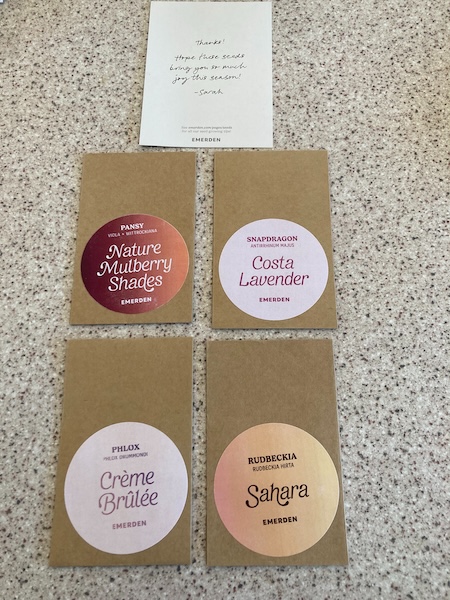

I am really excited to start planting these seeds in spring, which is less than a couple of weeks away now.
Have a wonderful day
Julie-Ann
Want to discuss my post? Feel free to chat with me on Instagram or Mastodon or Bluesky
Flower Seed Buying And My Seed Database
Hello friends,
It's that time of the year again in New Zealand, when seed companies send you tempting emails showing you the new flower seeds they have available for sale. This year two of my favorite specialist flower seed companies sent me emails in late May, so I had no choice but to peruse their wares.
The first temptation was from Susie Ripley Gardening, where I purchased Cosmos and Larkspur varieties.
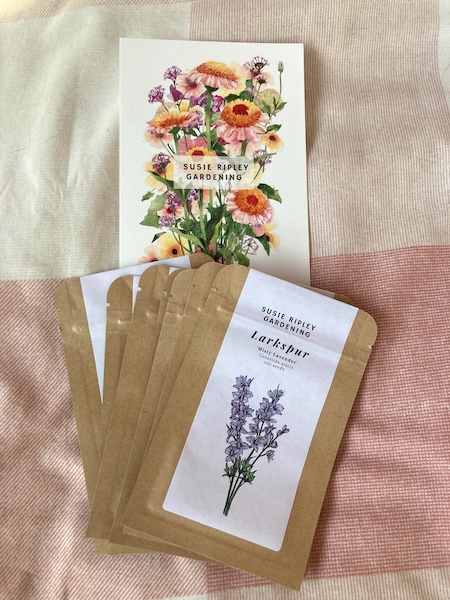
I have a soft spot for cosmos, and really fell in love with the cupcake and fizzy varieties. I can't wait to see them floating in the breeze this coming summer.
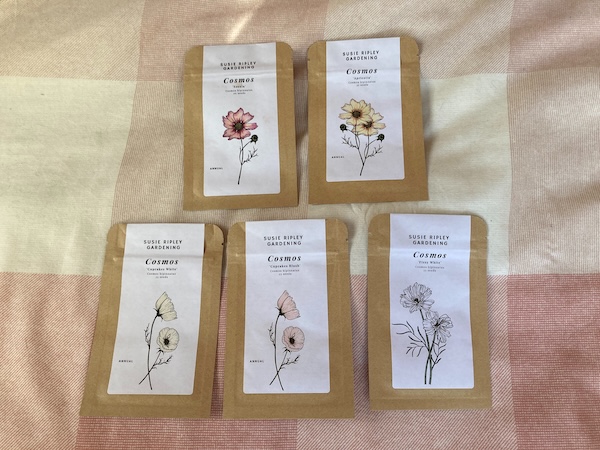
I also love how Larkspur brings some height to garden borders, so I got some purple and white varieties of that also.
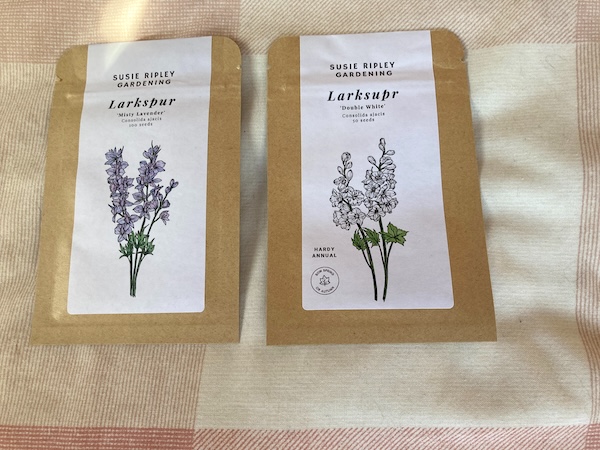
Next up was Crawford Road Gardens, where I picked up a number of seeds including aster, celosia, stock, larkspur, foxglove, scabiosa, lavender, and strawflower. My plan is to increase my garden borders in the back yard, so I picked colours that matched the seeds I bought from Susie Ripley Gardening.

Once I had the seeds in my hot little hands, it was time to enter them into my seed database. I have a seed database set up on Libre Office, one sheet each for flower, herb, vegetable, and native seeds.

The columns are set up for seed type, supplier, sow by date, whether a seed needs to be stratified, if they've been sowed in the current year, and then which months of the year they can be sowed in.
In the rows, I have sections for each flower type e.g. Allium, Cosmos, and underneath the varieties are in alphabetical order. If the variety is greyed out, it means that I don't have that seed in stock right now. If the row is highlighted in the 2024 column, it means the seed has been sown. Cells marked in green show which months the seed can be sown in.
I really love this set up as it means that I can quickly see which seeds I need to sow, if they are still within their use by date, and if I need to reorder any seeds. I recently updated the seed database for spring 2024, so I can now see which varieties I may need to buy when the Kings Seed catalogue comes out this month. I may decide not to repurchase some seed varieties, but at least I will know which ones I've had in the past.
I have separate sheets set up for all my seed types, and it really makes seed sowing that much easier. It means that I can come up with a plan each month for seed sowing, and it also means I can purchase seed sowing mix ahead of when I need it.
It's so exciting to know that spring will soon be here, I'm already loving the return of daylight earlier and later each day. I can't wait until August when it's time to sow tomatoes and chillies.
Have a wonderful day
Julie-Ann
Want to discuss my post? Feel free to chat with me on Instagram or Mastodon or Bluesky.
Harvesting and Drying Alma Paprika
Hello friends,
This is our second year growing alma paprika plants. It's really satisfying to sow them as little tiny seeds, see them grow up into seedlings, and then onto big pepper plants with red peppers that you can dry into mild paprika.
The process for growing alma paprika plants is pretty much the same as any other capsicums or chillies. The seeds need to be sown in late winter, at the same time as tomatoes, and they need consistent steady heat in order to germinate. At that time of the year we have them sitting in the dining room where we have the fire going each day. Within a couple of weeks they germinate, and slowly over a couple of months they grow into seedlings which need to be potted on.

I move the alma paprika seedlings into the glasshouse in early October, and once it gets to Labour weekend, it's time to plant them into the ground in the glasshouse. Over the next few months they get bigger, and need staking, and at around Christmas they begin to flower. The rounded alma paprika fruits begin to grow, and then it's a wait over late summer and early autumn for the growing fruits to begin to change colour to a bright red hue.
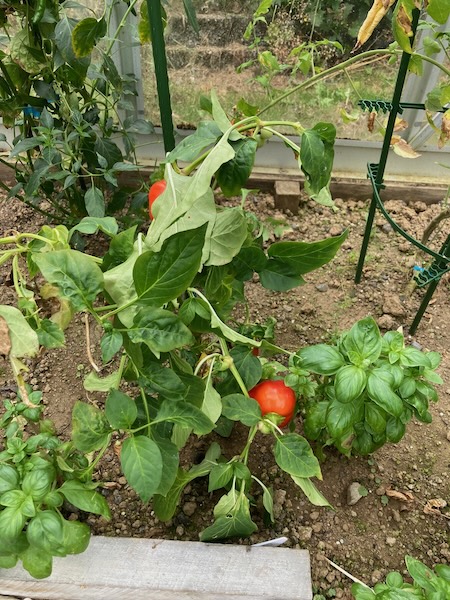

Once the alma paprika fruit has turned red, it's finally time to pick them. I cut them off the plant using a pair of secateurs, and then take them into the kitchen to begin processing them.
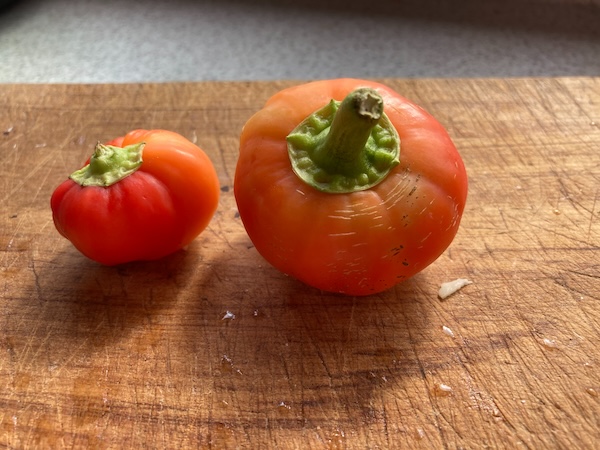
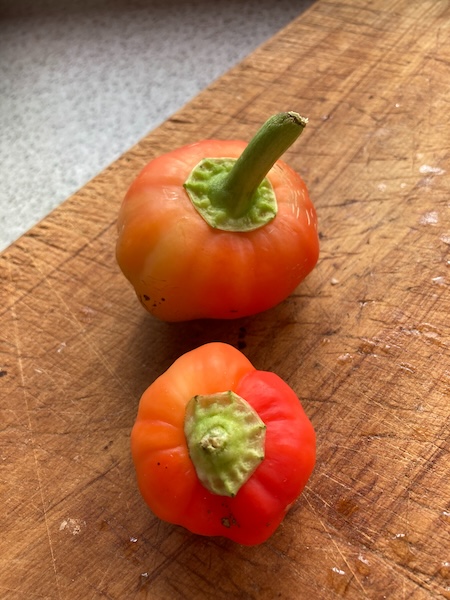
After chopping them in half, cutting off the stalks, and removing all the seeds, I slice the alma paprika fruit into thin slices and lay them out on a tray.

Then they go straight into the dehydrator at 35˚C, and I dry them until the slices are bone dry and brittle, ready for turning into paprika powder.
After a quick whizz in our spice grinder, the paprika powder is ready to use in cooking. The spice is tasty and mild, and works great in a number of dishes. The whole process is really easy, and satisfying, so it's now yet another yearly thing for me to do in the garden and kitchen.
Do you have any yearly tasks you enjoy? There's great satisfaction in accomplishing them when it means you have tasty food over the cold winter season.
Have a wonderful day
Julie-Ann
Want to discuss my post? Feel free to chat with me on Instagram or Mastodon or Bluesky.




